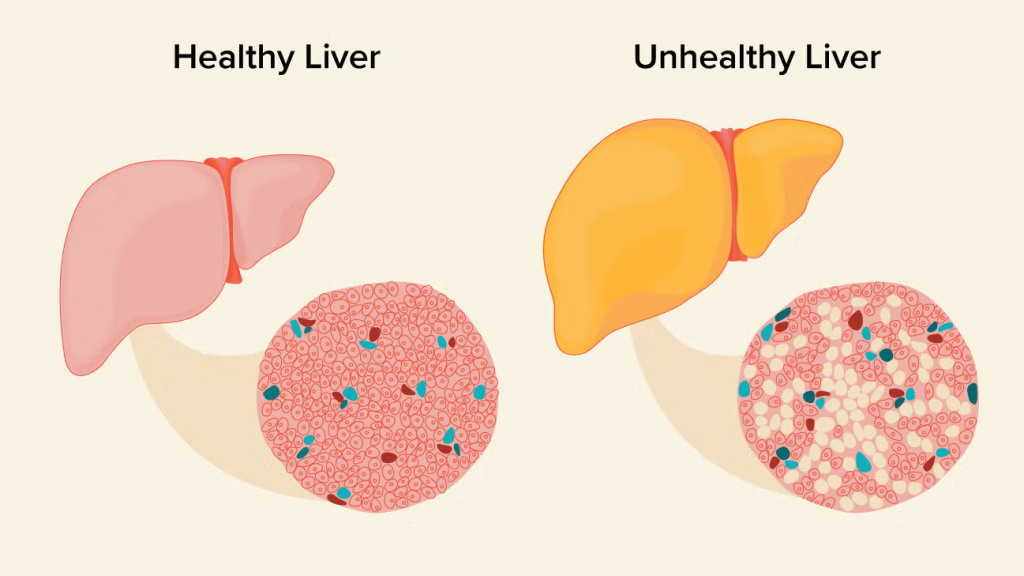Introduction
Fatty liver disease, medically known as hepatic steatosis, is a condition characterized by excessive fat accumulation in liver cells. This article provides factual information about treatment approaches based on current medical evidence and clinical guidelines.

Lifestyle Interventions: Primary Treatment Strategy
Nutritional Modifications
- Implement a balanced diet rich in fruits, vegetables, and whole grains
- Reduce saturated fat and refined carbohydrate intake
- Eliminate sugar-sweetened beverages
- Practice portion control and mindful eating
Physical Activity Recommendations
- Engage in regular moderate-intensity exercise
- Aim for 150-300 minutes per week of physical activity
- Incorporate both aerobic and resistance training
- Gradually increase activity levels under medical guidance
Weight Management
- Target 5-10% total body weight reduction for significant improvement
- Aim for gradual weight loss of 0.5-1 kg per week
- Focus on sustainable lifestyle changes rather than rapid weight loss
Medical Management Approaches
Pharmacological Treatments
- Vitamin E supplementation may be considered for non-diabetic patients
- Pioglitazone may be prescribed for patients with type 2 diabetes
- Newer medications are under investigation in clinical trials
- All medications require prescription and medical supervision
Management of Co-existing Conditions
- Optimize control of diabetes and prediabetes
- Manage cholesterol and triglyceride levels
- Address hypertension and cardiovascular risk factors
- Treat underlying metabolic syndrome components
Advanced Disease Considerations
Non-Alcoholic Steatohepatitis (NASH) Management
- More intensive lifestyle interventions required
- Regular monitoring for fibrosis progression
- Consideration for specialized hepatology care
- Possible need for liver biopsy in selected cases
Cirrhosis and Liver Failure Management
- Comprehensive hepatology team approach
- Management of liver-related complications
- Nutritional support and monitoring
- Evaluation for liver transplantation in eligible candidates
Monitoring and Follow-up
Regular Assessment Parameters
- Liver function tests every 3-6 months initially
- Imaging studies to monitor disease progression
- Metabolic parameter monitoring
- Assessment of treatment adherence and response
Long-term Management Strategy
- Ongoing lifestyle maintenance
- Regular medical follow-up
- Continuous patient education
- Adjustment of treatment plans as needed
Important Considerations
- Individualized treatment approach based on disease severity
- Combination therapy often produces best results
- Early intervention improves long-term outcomes
- Regular monitoring essential for treatment optimization
When to Seek Specialized Care
Consult a hepatologist or gastroenterologist if:
- Advanced fibrosis is suspected
- Response to initial treatment is inadequate
- Significant liver enzyme elevations persist
- Complications of liver disease develop
Conclusion:
Fatty liver disease management requires a comprehensive approach centered on lifestyle modifications, with medical interventions reserved for specific cases. Successful treatment depends on sustained lifestyle changes, regular monitoring, and appropriate medical supervision.
Disclaimer: This information is provided for educational purposes only and does not constitute medical advice. Treatment decisions should be made in consultation with qualified healthcare professionals. Individual responses to treatment may vary based on specific clinical circumstances.
